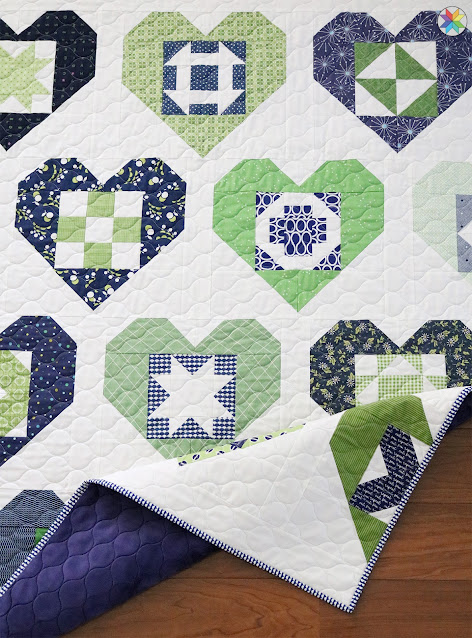Who is ready for a fun and low-stress Summer project? Announcing the Summer Block Party quilt along!
WHAT: Join us in creating a breezy Summer quilt with blocks designed by some of your favorite designers! This will be a mystery quilt of sorts, with the blocks and the final layout being revealed along the way.
WHEN: Starting Monday June 17 (sign ups are open NOW)
- Each day for 9 days we will email you a PDF pattern for a free 12" Summer quilt block.
- On June 26th we will send you finishing instructions to turn your blocks into a 44" x 58" quilt.
- The fun doesn't stop there! Each Friday in July we will send you free BONUS projects to make with your 12" blocks.
- Sew at your own pace through the Summer!
HOW TO JOIN: It's free to join! Sign up here to receive the daily email with the PDF patterns...AND the bonus projects.
- You only need to sign up once with one designer to get the blocks (All designers will be sending out the same patterns each day).
- Following the completion of the Summer Block Party, you will be subscribed to each of the participating designers' newsletters which are free - and you can easily unsubscribe anytime.
WHO: Here's the list of designers for the QAL. It's a fun group and I can't wait for you to see the blocks and bonus projects that we've designed!
Amanda Niederhauser Jedi Craft Girl @jedicraftgirl
Amy Chappell Ameroonie Designs @amerooniedesigns
Amy Smart Diary of A Quilter @diaryofaquilter
Andy Knowlton A Bright Corner @abrightcorner
Bev McCullough Flamingo Toes @flamingotoes
Jen Belnap The Smitten Chicken @thesmittenchicken
Jennifer Long Sew A Story @sewastory_jenniferlong
Melissa Mortensen The Polkadot Chair @polkadotchair
FABRICS:We will be using the following fabrics for our blocks, but feel free to use whatever you'd like!
All fabrics listed are from Riley Blake Designs and each block pattern will use the following names to identify fabrics (bold names):
For those that sign up there's a helpful information sheet PDF available that has the schedule, the QAL details, fabric requirements, and a handy planner sheet so you can plan out your own fabrics.
Remember - the free block patterns can only be accessed by signing up for the QAL; the blocks won't be shared here on my blog. Sign up here to receive the block patterns and bonus projects, and we'll get started on Monday June 17th!














